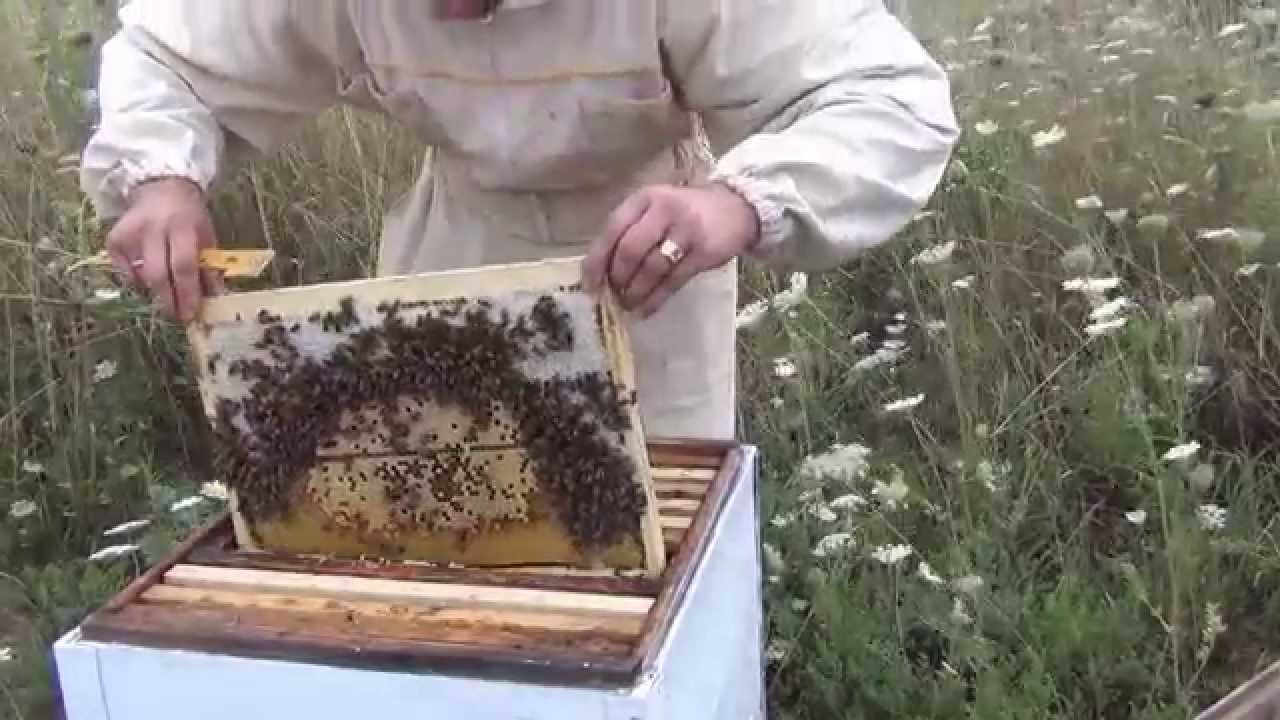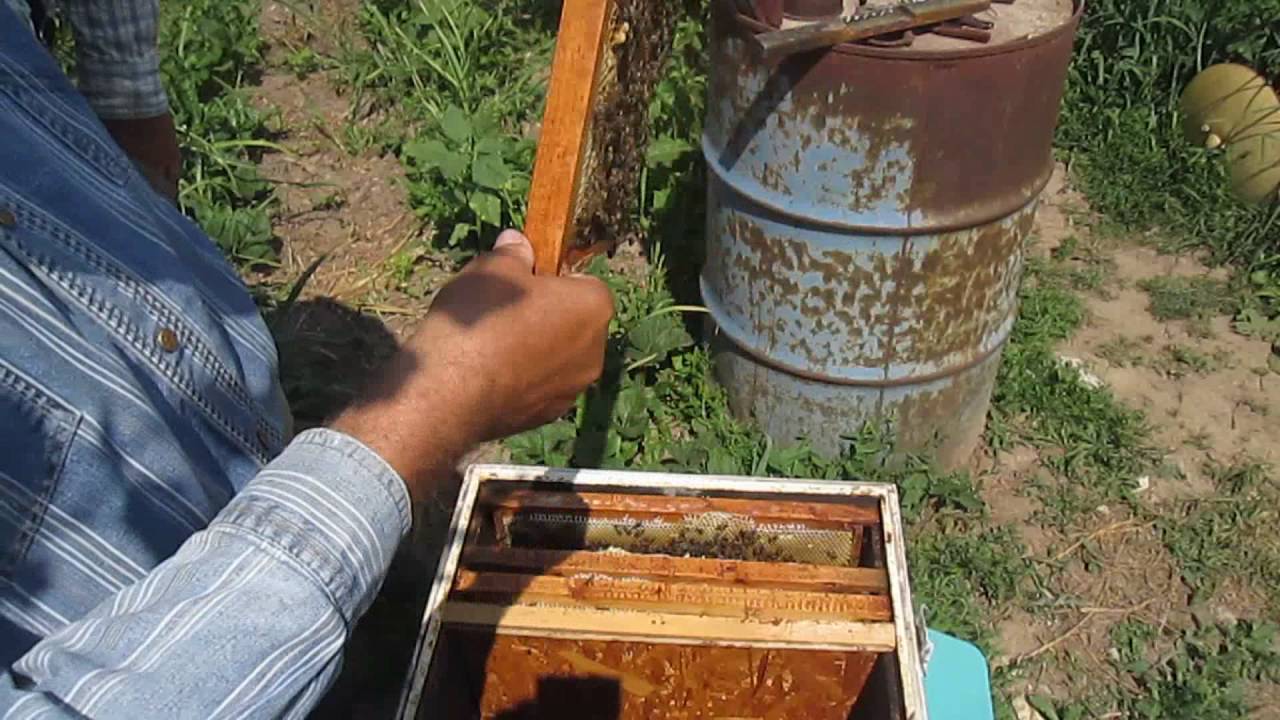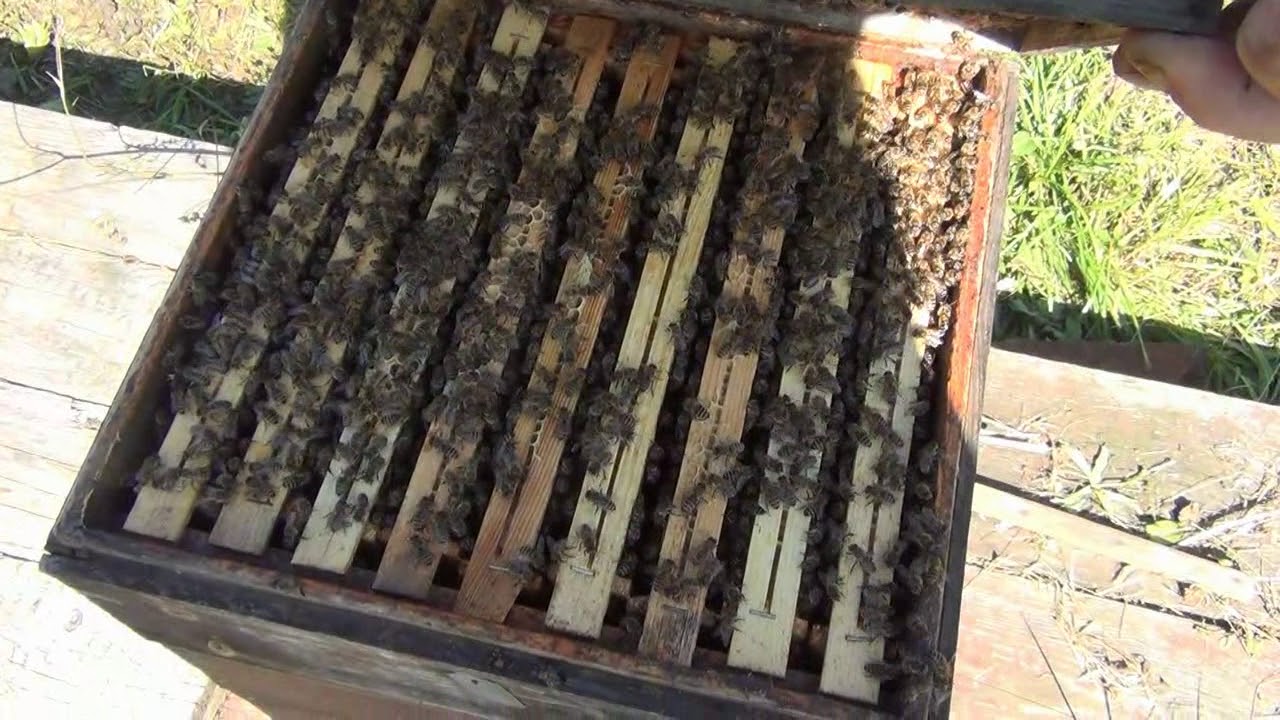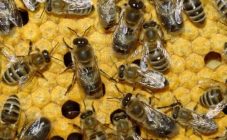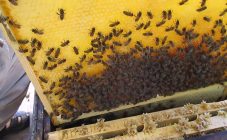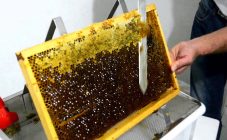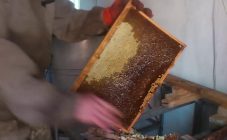Content:
For breeding and multiplication of bees in the apiary, it is necessary to form the layers correctly and in time. In this way, a person will subdue insects by pushing them to reproduce and create new strong bee colonies.
August layering of bees
The formation of layering is carried out from strong bee colonies, in which there are at least 10 full streets of bees and 8 frames with brood. If we take layers from weak colonies, this will prevent them from growing enough brood and young individuals for the honey harvesting season.
Layers can be:
- individual - taken from one bee colony;
- prefabricated, when the brood is used from several bee colonies.
The cut is formed into a young flight bee on the fifth day.
In early August, if there is no weight gain in the control hive, honey is taken from it. In parallel with this, a layer on six frames is taken from the family and the fetal uterus is attached to it. They are fed small amounts of sugar syrup.
Layers of August bees are no less effective than those formed in spring or autumn. The end of the summer season is a good time to start new families. Insects are in their prime and very efficient. If you do a transplant in August, then in the middle of October a lot of new brood will appear in the hive, which will overwinter well with a sufficient amount of feed.
For the winter period, the hive is insulated and treated with Bipin for prophylaxis against ticks. After the preparatory operations, the toiling bees hibernate well, and in the spring they give sufficient bee brood.
Young and inexperienced beekeepers often wonder how to lay bees in August so that a sufficient number of new colonies appear in the spring. Holding events in August allows not to separate the bee colonies before the honey season, so as not to reduce the amount of products received.
There are several options for how to make layering in the bee colony yourself. Beekeepers try to choose the easiest way so that the process is easy and does not take much time.
However, one should not feel sorry for the insects that worked on the summer honey harvest. They will most likely not survive until spring. But before the fall, they may be useful.
A simple way to form layering
To form new families, the layers are placed in a separate hive, which helps to simplify their care. Formation is carried out on a warm sunny day. At this time, no worker bees should be in the hive, but only non-flying young individuals.
Stages of work:
- It is necessary to carefully examine each family, find the uterus and cover it with a cap. It should not get into the brood combs, which will be transferred to another hive.
- From the nest of a strong colony it is necessary to get combs with mature printed brood. The honeycomb is placed in a special portable box. Each honeycomb should be tightly covered with bees.
- Many strong colonies have a large supply of food, it is necessary to remove one full food combs, also densely covered with insects.
- An empty hive is being prepared for the resettlement of new families. Repair if required and complete disinfection.
- Several fodder combs with honey and bee bread are installed in it. The location of the new hive should be close to the inhabited one. Do not forget that a frame with a printed brood must be placed in the hive. Initially, large families are created, and then young individuals are added to them.
After returning from the bribe, the bees will settle evenly in the same prepared hives. Soon, in the one where there is no queen left, the toiling bees will create a new one. If this does not happen, then the beekeeper can independently plant the queen bee in the hive.
Artificially bred queen bees are planted in a filled hive four hours after the colonization of working insects. It can be a mature uterus, an infertile or fetal young uterus. It is placed in the middle of the nest between the brood, and a day later it is released into combs.
The new hive should have two compartments bounded by a bar so that each family can independently warm up. Due to this, the bee will develop faster and more efficiently. At a certain moment, the dividing bar is removed and the two families are united into one big one. After settling the bees, the hives are placed at a sufficient distance from each other. In each of them, insects of different ages will live.
The distance between the hives is of great importance. It will be most effective to place them as far away from each other as possible, so that each family stays in its place, is engaged in honey extraction and breeding new brood.
Formation of layering of bees without a queen
In beekeeping, brooding without a queen has the same number of advantages and disadvantages.
Individuals from a strong formed family are deposited in a hive with prepared frames, and the uterus remains intact.
This method is temporary. Later, before or after the honey harvesting season, the sown bee colony with the hatched new young individuals is transferred back to the main formed bee colonies.
In order to increase the number of bees by forming layers without a queen, it is necessary to prepare two identical hives. Find a family in the apiary that has at least 12 brood frames. When the workers leave the house to collect honey, it is required to place a new hive next to the old one and distribute the frames evenly in both nests. Insects returning home will not be able to distinguish the hive and be evenly distributed between two bee colonies.
On the sixth day, check the hives. In the nest where the queen is not left, new queen cells should be laid. They should be examined and the defective ones removed (it is enough to leave no more than four pieces). Further, if possible, you need to observe the families - it may be necessary to add an additional sowing frame to the hive without a queen.
After 24 days, a check is carried out - the first seeding made by the new queen bee should be found. If her behavior is normal, and the sowing is of good quality, then the formation of the layers was successful. Otherwise, the colony is attached to the old queen, and the next branch is formed only after a year.
This method is effective in the normal beekeeping cycle and improves the quality and productivity of the worker bees.
Layers after honey collection
After the honey harvesting season, most of the colonies retain their strength, and there is less work for them.
There is a lot of brood in the hive, and the bees collect late nectar. There is a month left until the end of the season, which will be enough to strengthen and prepare families for winter. Young cuttings store enough honey for the winter.
By the end of August, late layers have four frames with brood. If the beekeeper feeds them with bee bread or milk mixture, then they quickly gain strength.
Late autumn layering
With the onset of autumn, a large number of worker bees die, and the working capacity of the rest is significantly reduced. Experienced beekeepers rarely choose late autumn hatching. Because in the cold season, young individuals do not have time to grow enough, and in the spring they produce a small amount of brood for seasonal honey collection.
In order not to lose all bee colonies, the beekeeper makes layering after honey, which is called the formation of autumn layering. Young individuals have a hard time tolerating cold winters and hatch a small number of new bees in the spring.
Bees bred in the summer have a large amount of nutritious protein and other useful substances in their bodies, in contrast to the autumn brood. They tolerate winter better and produce good brood in spring. Therefore, the formation of layering in the fall is done only to increase the number of bee families, in which there were many weakened individuals.
Breeding bees by layering is considered to be the most effective and popular method. Thus, no harm is done to the bee colonies and their efficiency does not decrease, and, accordingly, the amount of honey product.
Post-tipping division at the end of July of half of the apiary allows you to get many strong families, which will give some amount of marketable honey next summer and even spring. Because if willow, maple and other plants grow in the vicinity of the apiary, which give early honey harvest, it is advisable to have strong bee colonies in the spring.
